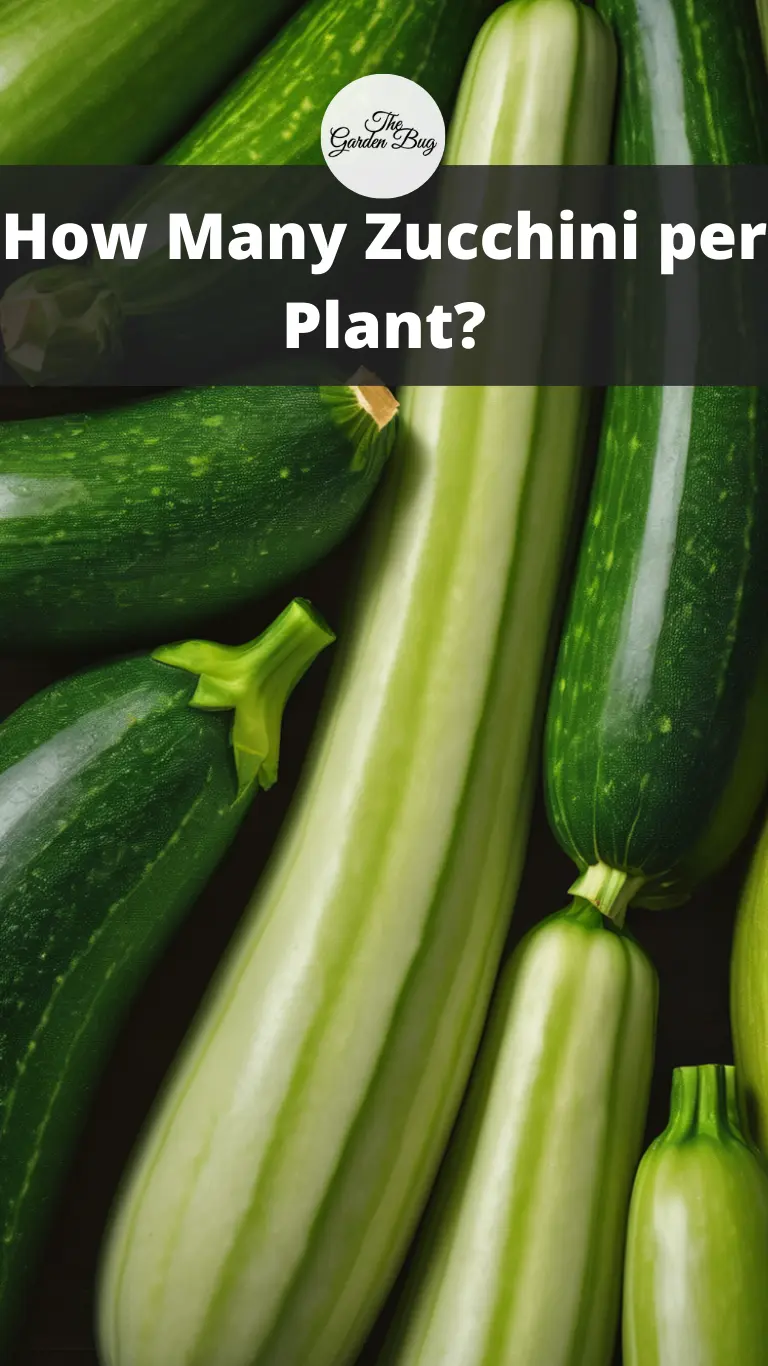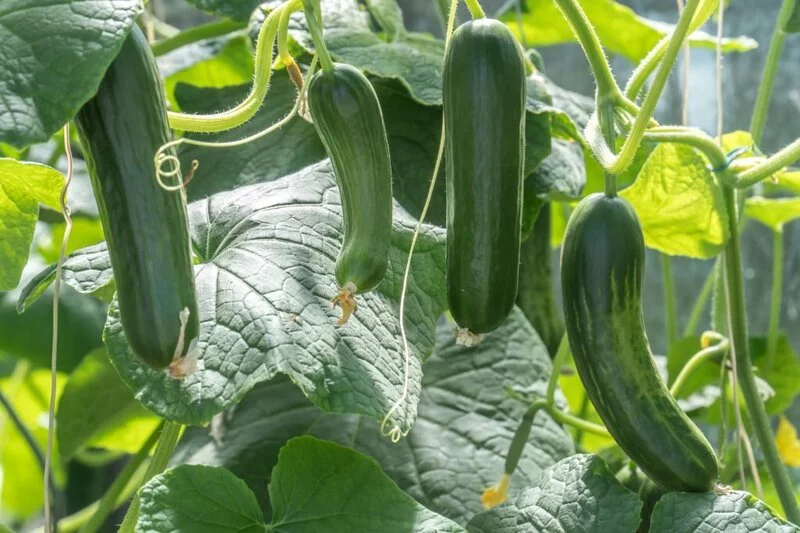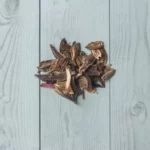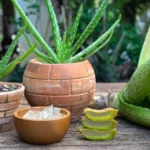Are you planning to grow zucchini in your garden, or have you already planted some and are now curious about your future harvest? Well, you’re in the right place! Zucchini is a fantastic choice for home gardens. These hearty plants are known for their generous yields and versatility in the kitchen. Let’s dive in to understand what you can expect from your zucchini plant!
- Glossy, black-green zucchini with creamy, White flesh. Plants are easy to grow with an early harvest
- Each packet contains 100 seeds
- Sow outdoors 4 weeks after the average last frost date and harvest in 50 days
- Plant Height is 12″. plant spread is 72″. yields 6-8″ fruit
- Annual for all growing zones from 1-11. Sunlight exposure = full-sun
Zucchini Plant Growth and Production
Zucchini plants, also known as summer squash, are renowned for their prolific nature. Each plant sprouts large, broad leaves that soak up the summer sun, directing energy towards fruit production. But how does this energy translate into the zucchinis that we all love?
Zucchinis grow from yellow flowers that bloom on the plant. There are two types of flowers – male, which are tall and slender, and female, which have a small swelling (the ovary) at the base that will develop into zucchini after pollination. This process is crucial for fruit set and ultimately determines how many zucchinis you’ll get.
Now that we’ve understood the basics, let’s explore the factors that influence the number of zucchinis a plant can produce.
Factors That Affect Zucchini Yield
Just like any other plant, zucchini’s productivity depends on several key factors:
- Plant Health: A healthy, disease-free plant will produce more fruits compared to a plant struggling with pests or illnesses.
- Weather Conditions: Zucchinis love warmth. Cooler temperatures, excessive rain, or drought can hinder the plant’s growth and, consequently, its yield.
- Soil and Nutrients: Rich, well-draining soil that is high in organic matter promotes better growth and a higher yield. Regular feeding with a balanced fertilizer can also boost the number of fruits.
- Pollination: Zucchini plants need bees or other insects for pollination. If these pollinators aren’t available, you might need to step in and pollinate the flowers by hand.
- INCLUDES: 1 Trial pouch.
- BENEFITS: Makes 128 applications for house plants. (Makes 1 gallon; Each gallon makes 128 applications) It’s like a full ecosystem in a bottle that is a concentrated formula for watering your plants it’s easy: 1. 2. 3. and you’re ready to go. Great for all soil and growing media, hydroponics, semi-hydro, leca, vivarium with reptiles, terrariums, water gardens, fish tanks, flowers, and so much more. Good For Roots, Stems, Leaves, Blooms, Foliage, and overall plant health.
- WHAT IS IT? Fully Digested Elemental, Nutrient Supplement System for all plants. All vitamins and minerals with the microbial index are essential to a plant’s life. Complete Micro-fungi mycorrhizae and rhizobacteria strains in a pH Balanced formula.
- HOW LIQUI-DIRT IS MADE: Our Zymology process breaks down the 18 ingredients into thousands of separate, fully digested, and readily absorbable elements. This full nutrition can take over 5 years to complete before we bottle it up for you.
- WHATS IN IT: 18 Balanced Super Nutrients For Plants Including Poultry Litter, Rabbit Manure, Bat Guano, Cricket Fras, Humic Shale, Worm Castings, Oyster Shell, Mycorrhizae, Dolomite limes, Kelp Meal, Gypsum, Alfalfa meal, Concentrated Fulvic Acid, Blood meal, Proprietary mineral blend from the best sources.
How Many Zucchini Can One Plant Produce?
So, let’s get to the heart of the matter—how many zucchinis can one plant produce? Well, under ideal conditions, a healthy zucchini plant can produce 6 to 10 pounds of fruit per season. This amount can translate to approximately 3-9 zucchinis per week during the peak growing season, but it can vary depending on the size at which you prefer to harvest your zucchinis.
Remember, these are just averages. The actual number can be higher or lower depending on the growing conditions and how well you care for your plant. It’s also important to pick zucchinis regularly once they start to mature, as leaving ripe fruit on the plant can signal it to stop producing new ones.
In the next section, we will share some tips on how to maximize your zucchini yield. Stay tuned!
Tips for Maximizing Zucchini Yield
Here are some easy tips to help you get the most out of each zucchini plant:
- Plant Spacing: Zucchini plants need plenty of space to grow. Space them about 2-3 feet apart so that they get enough sunlight and air circulation.
- Water Wisely: Zucchinis need plenty of water, but it’s important to avoid wetting the leaves, which can lead to mildew. Use a soaker hose or drip irrigation to water at the base of the plant.
- Fertilize Regularly: Use a balanced, all-purpose vegetable fertilizer to feed your zucchinis. This will provide the necessary nutrients for healthy growth and a bountiful yield.
- Monitor for Pests and Diseases: Keep a close eye on your plants for signs of pests or diseases, such as yellowing leaves or tiny insects. Catching these problems early can prevent them from spreading and damaging your yield.
- Hand Pollinate if Necessary: If you notice that your zucchinis are blooming but not producing fruit, it may be due to a lack of pollinators. You can gently use a small paintbrush to transfer pollen from male to female flowers.
Conclusion
Growing zucchini can be a rewarding experience, especially when you can enjoy a bountiful yield of these tasty veggies. Remember, the key to a high yield is a combination of proper care, a good understanding of the plant’s needs, and a little bit of patience.






